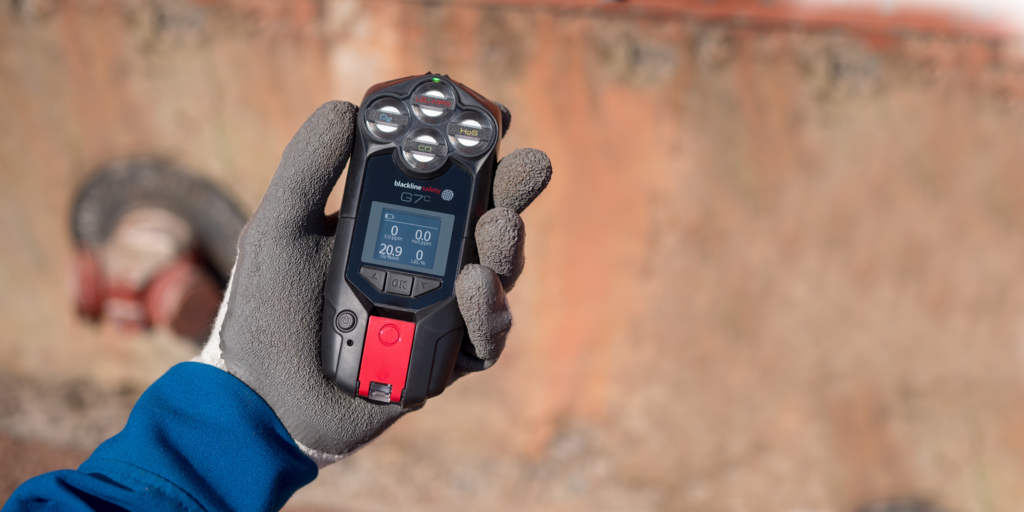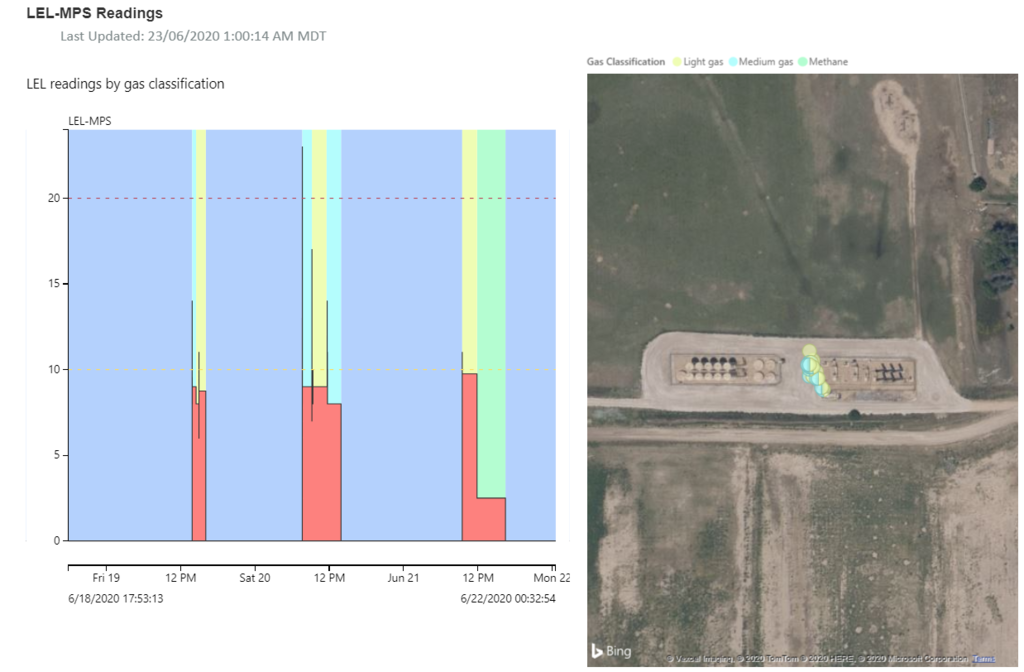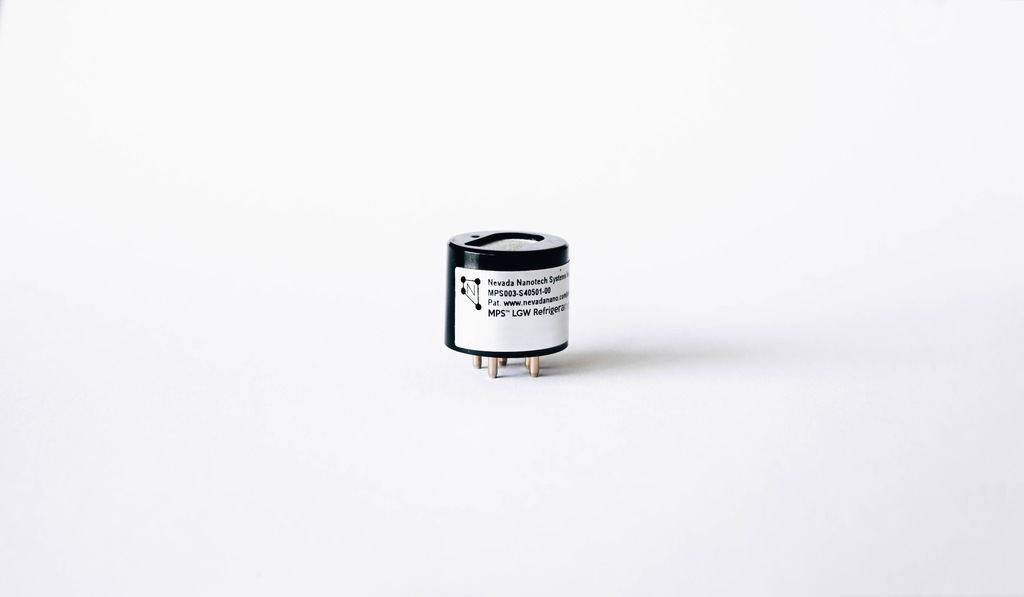
Kelly Rose
Editor

Kelly Rose
Editor
As digital transformation continues through global industry, four trends are driving innovation in flammable gas detection: poison resistance, unparalleled accuracy to multiple hydrocarbons, connectivity and data science. Sean Stinson and Bob Christensen look at the trends in combustible gas detection.
DIGITAL TRANSFORMATION is changing the way we do business. It’s reshaping entire industries and empowering companies with technology to overcome challenges, improve performance and expand overall situational awareness. This trend is extending to nearly every aspect of business at an ever-increasing pace, from operations to safety procedures.
Digital transformation brings innovations that have streamlined traditional workforce processes, such as lone worker monitoring, area monitoring and compliance reporting. We are now seeing these innovations at play in flammable gas detection.
What is flammable gas detection?
Gas leaks are a common concern for companies in the oil and gas, petrochemical, utilities, mining and public safety industries. Hazardous gases are often present and may pose a risk to personnel if the proper precautions are not taken. Combustible gases present a unique challenge as, even though they are not immediately toxic to employees in the space, they can cause gas-fueled expositions, threatening lives and property.
To safeguard against gas exposures and ensure worker safety, companies must continuously monitor for the presence of combustible gases by equipping all workers with personal gas sensors. These devices, often called flammable gas sensors or LEL sensors, are designed specifically to detect the lower explosive limit (LEL) of combustible gases. The LEL is the lowest level of concentration at which a gas becomes potentially explosive.
While these devices are essential to detecting hazardous conditions, combustible gas sensor technology has remained stagnant for decades. Sweeping digital transformation programs have caused the emergence of four key trends that are changing the game when it comes to protecting workers in potentially combustible environments. These trends not only keep workers safer, but also give organisations unprecedented control over their gas detection programs.
Poison resistance
The products you love are trying to kill your pellistor LEL sensor. Silicones are one of the main poisoners of LEL sensors, diminishing or inhibiting the sensor’s ability to sense ambient gases, and they can be found in thousands of products, even ones you wouldn’t expect. Silicone variants like Dimethylpolysiloxane can be found in some energy drinks, while dimethicone is in hand creams, shampoo, conditioners and more. Consistent and stringent daily bump tests have been the only way to detect if an LEL gas sensor has been poisoned. Yet, even this may not protect the sensor against ambient silicone poisoning — it can happen in a short time during a shift, leaving the worker unprotected and vulnerable to unknown combustible hazards.
Poisoned LEL sensors can produce persistent false alarms, which can erode user confidence and foster complacency. This inherently puts users at greater risk, as they are less likely to take a high gas reading at face value. While these environmental silicones are a never completely avoidable, and are often a required tool for many industries, advances in LEL sensor technology have improved reliability so no worker has to wonder if there is flammable gas in their environment. For example, a sensor that uses robust micro-electro-mechanical systems (MEMS), called the Molecular Property Spectrometer (MPS), helps prevent this problem. The certified MPS sensor, developed by NevadaNano and integrated into Blackline Safety’s G7 line of gas detectors, is inherently poison resistant – it cannot be poisoned by silicones or other chemicals. The MPS sensor also includes built-in diagnostics to detect when a sensor is inoperable and let the user know immediately on their device. This provides fail-safe operation and further enhances worker confidence. Rather than a potential sensor failure being hidden by a confidence-inspiring 0% LEL reading, workers can be assured the sensor detects a problem in its operation the moment it happens.
Unparalleled accuracy to multiple hydrocarbons
For years, flammable gas detection has been dominated by two types of LEL sensors: pellistor and NDIR. Although these sensors have stood the test of time, both potentially leave workers vulnerable to a layer of guesswork that has become commonplace – until recently.
Many businesses will typically calibrate their pellistor or NDIR LEL sensors to methane. If the sensor is then exposed to 50% LEL methane, it should provide a very accurate 50% LEL reading.
The same is not true for other gases, however. For example, if that methane-calibrated pellistor sensor is presented with 50% LEL xylene, it can provide a much lower reading than it should, placing the worker at risk. In contrast, if the methane-calibrated NDIR sensor is presented with 15% LEL ethane, it can artificially read over 25% LEL, triggering a false high-gas alert. In both cases, the pellistor and NDIR sensors are responding to real levels of combustible gases but not providing the user with an accurate reading. This forces workers to guess which gas, potentially out of many, they’re most likely to encounter and calibrate their sensors accordingly.
Depending on which sensor technology is used, which gas is used for calibration and which gas is being detected, the outcome has the potential for either more false alarms or false low readings that can place the worker at a higher level of risk.
Leveraging the latest advancements in LEL sensor technology, the MPS sensor addresses this challenge. The MPS sensor accurately detects several of the most common combustible hydrocarbon gases and gas mixtures without multiple calibrations or correction factors. By delivering TrueLEL readings of the exact lower explosive limit of individual gases and mixtures this sensor technology eliminates the guesswork and other challenges of traditional sensor technologies, including immunity to poisoning and the ability to detect hydrogen.
Connectivity
A tenet of digital transformation, regardless of industry, is connectivity. Connectivity has permeated our daily lives, personally and professionally. Everything from cars to watches are becoming connected. In fact, instant connectivity and visibility are increasingly becoming standard for businesses trying to keep workers safe while also optimising operations.
Connectivity provides a critical link between previously disparate people, systems and processes. For example, connected safety wearable devices use wireless communication to connect personnel in the field with other members of their organisation or safety monitoring teams. This connectivity fosters both efficient day-to-day communication as well as potentially life-safety responses to injuries or incidents.
Connectivity further connects a workforce by streaming and synching data directly to a highly secure cloud where information from multiple sources can be compiled and then leveraged to make data-driven business decisions. This can include data about an employee’s gas exposures over time and the locations and times they occurred to allow for proactive investigation into potential operational or facility improvements.
Connectivity on this scale is driving more holistic safety programs and procedures, especially when it comes to flammable gas detection. When there are combustible gases present on a worksite, risks are amplified. Connectivity provides the tools to deliver the full situational awareness to the organisation, supporting a comprehensive safety program to help mitigate safety risks or damage to property.
Data science
If connectivity is what makes digital transformation possible, data science drives it forward. Collecting and combining data from multiple sources across the workforce and worksite allows personnel to better visualise a situation, identify a problem and develop a well-informed solution. Information gathered from these new, highly accurate LEL sensors is a key piece of that data puzzle, addressing the issue of traditional sensors suffering from unreliable sensitivities to different combustible gases. When combined with connected location technology, businesses are now able to unlock a new layer of insights into their operations, detecting and locating leaks before they become more serious.
The MPS sensor also features the first ever LEL gas classification system for personal monitors. Each gas reading is placed into one of six classifications — hydrogen, hydrogen mixed with hydrocarbons, methane or natural gas (C1), light gas or a light gas mixture (C3), medium gas or medium gas mixture and heavy gas or heavy gas mixture. This allows businesses to pinpoint a gas leak in a previously unidentified area using data streamed to the cloud by workers’ devices as they pass through the facility. Safety leaders can view these gas exposures on a map – seeing where you have hydrogen leaks or C5 hydrocarbon leaks in your facility. To each employee, the gas monitor looks and functions just like a traditional LEL monitor, but with the benefit of increased accuracy across a range of common combustible gases. The result is an ability to understand the source of leaks in a way that has not been possible before – giving you a safer workforce and improved work environment.
Incorporating data from connected flammable gas detectors into the context of facility operations contributes to overall situational awareness, painting a more complete picture of your worksite.
What this means for you
Combining improved LEL sensor reliability and robustness with cloud connectivity and data science unlocks great potential for companies moving through their digital transformation. It increases accuracy and confidence for workers and equips organisation decision makers with the information needed to drive improvement in safety and operations. These trends are setting a new standard for combustible gas detection that builds a comprehensive view of safety starting from when a worker clocks in to when they clock out.
Sean Stinson is VP sales and product management for Blackline Safety, and Bob Christensen, is senior director of business development for NevadaNano. For more information, visit www.nevadanano.com and www.blacklinesafety.com




12 De Grey Square
De Grey Road
Colchester
CO4 5YQ
UNITED KINGDOM
01787 222684